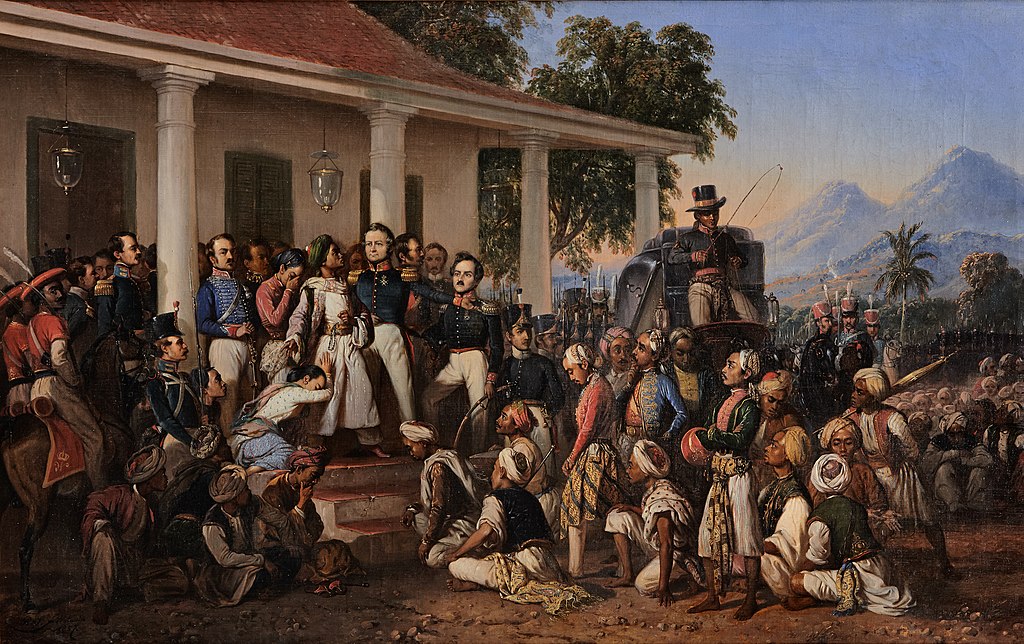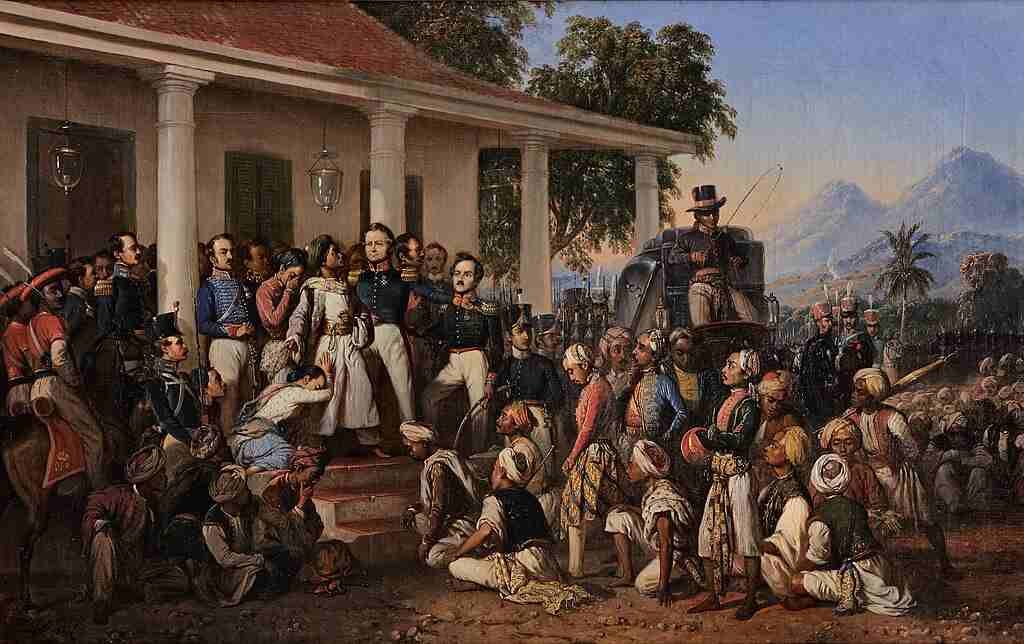The Arrest of Pangeran Diponegoro Painting
The Arrest of Pangeran Diponegoro painting 1857, now is in Merdeka Palace Museum, Jakarta.
Raden Saleh is particularly known for his historical painting, The Arrest of Pangeran Diponegoro painting, which depicts the betrayal of rebel leader Prince Diponegoro by the colonial government, ending the Java War in 1830. The prince was taken into custody Dutch army near Magelang, believing that he was there to negotiate a possible ceasefire. He was treacherously captured and later expelled.
The event had already been painted by a Dutch painter Nicolaas Pieneman, commissioned by Lieutenant General Hendrik Merkus de Kock. It is believed that Saleh saw this painting during his stay in Europe. Saleh made significant changes in his version of the painting; Pieneman painted the scene from the right, Saleh from the left. Pieneman portrays Diponegoro with a resigned expression, while in Saleh he appears indignant. Pieneman gave his painting the title Presentation of Prince Diponegoro, while Saleh gave The Arrest of Pangeran Diponegoro. It is known that Saleh deliberately painted the Dutch captors of Diponegoro with large heads to make them look monstrous, as opposed to the more proportionally depicted Javanese.
Read also: Most Famous Paintings in the World
Raden Saleh’s work was seen as a sign of budding nationalism in what was then the Dutch East Indies
This can also be seen in the depiction of Diponegoro’s men. Pieneman had never been to the Indies and therefore portrayed Diponegoro’s men in a more Arabic way. Saleh’s version features a more accurate depiction of clothing of Javanese origin, with some figures wearing batik and blangkon (traditional Javanese headgear worn by men and made of batik fabric).

The Arrest of Pangeran Diponegoro Painting by Raden Saleh (1857) Raden Saleh, Public domain, via Wikimedia Commons
Saleh completed this painting in 1857 and presented it to King Willem III of the Netherlands in The Hague
This painting was returned to Indonesia in 1978 as a realization of a cultural agreement between the two countries in 1969, regarding the return of cultural property that was taken, loaned or exchanged from the Dutch in previous eras. Even though the painting did not fall into any of these categories, because Saleh presented it to the King of the Netherlands and it was never in the possession of Indonesia, it was nevertheless returned as a gift. from the Royal Palace in Amsterdam, and is currently displayed at the Merdeka Palace Museum in Jakarta.
Sources: PinterPandai, Useum, WikiArt
Photo credit: Raden Saleh, Public domain, Source/Photographer: Istana Negara Jakarta: via Wikimedia Commons



